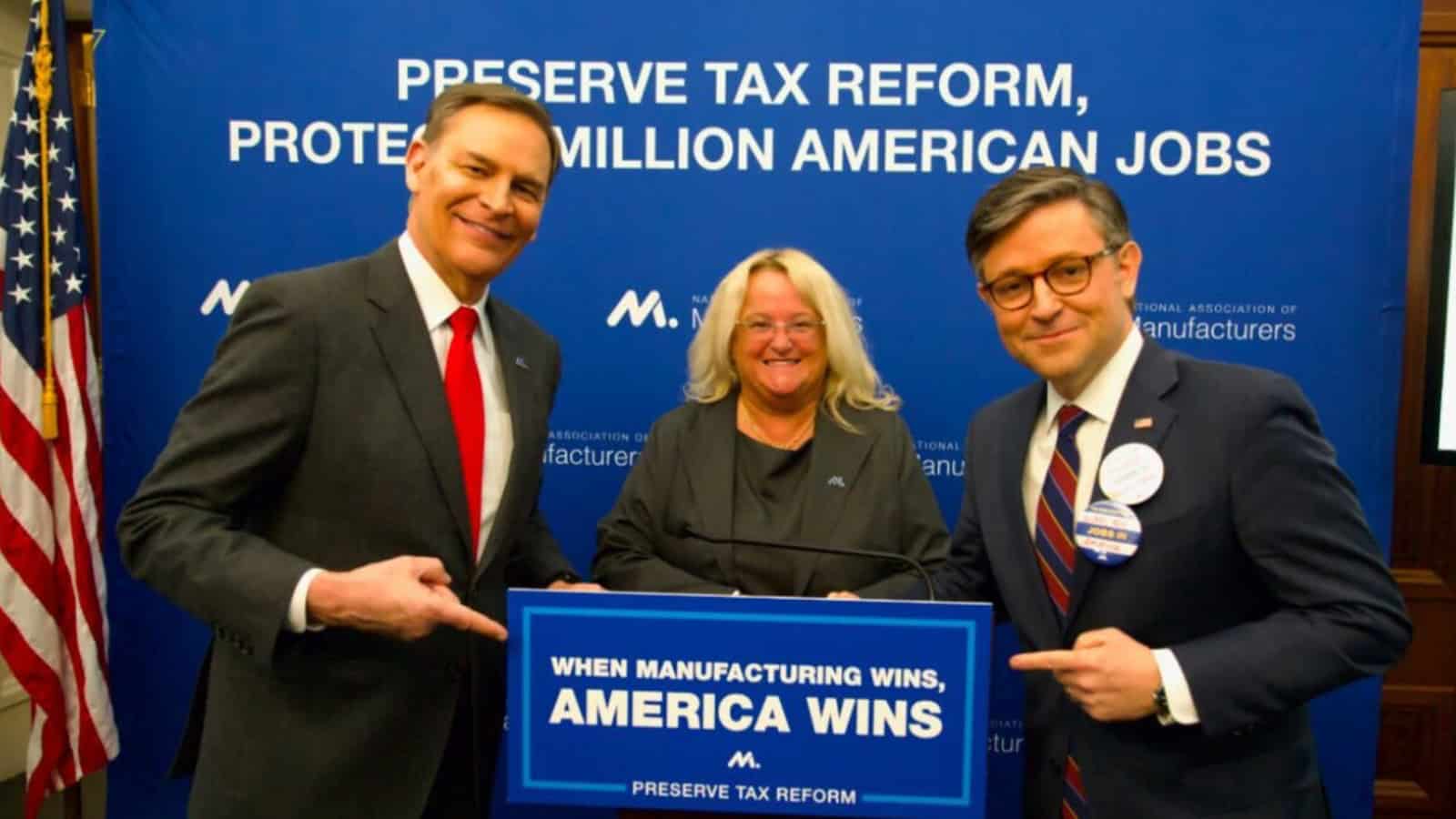Market Expects Steady Rates as Fed Adjusts Inflation Outlook
Consumer prices increased 0.4% over the month and 2.9% over the year in December, accelerating from the 2.7% over-the-year rise in November. Core CPI, which excludes more volatile energy and food prices, edged down to a 3.2% over-the-year increase and rose 0.2% over the month, which is down from the 0.3% monthly gains from the four prior months.
Shelter rose 0.3% over the month and 4.6% over the year in December, the smallest 12-month increase since January 2022. On the other hand, food price increases are inching back up, rising 0.3% over the month and 2.5% over the year in December. Prices for transportation services climbed 0.5% over the month and 7.3% over the year, with motor vehicle insurance surging 11.3% over the year.
Energy costs soared 2.6% in December, accounting for more than 40% of the monthly increase of the all-items index, but fell 0.5% over the year. Price changes within the energy category varied widely. For example, energy commodity prices are down 3.9% over the year, while utility (piped) gas service prices are up 4.9%.
As the over-the-year headline rate has ticked up in previous months, markets are anticipating that the Federal Open Market Committee will keep rates steady at its meeting next week. As was exhibited in its December Summary of Economic Projections, the FOMC’s expected easing plan of 100 basis points of rate cuts in 2025 was dialed back to 50 bps as the Fed’s progress on inflation slows.
Industrial Production Rises in December, Led by Aerospace Gains
Industrial production increased 0.9% in December after rising 0.2% in November. Meanwhile, manufacturing output moved up 0.6%, with a 6.3% gain in the aerospace and miscellaneous transportation equipment index leading the increase. Despite the over-the-month gain, aerospace and miscellaneous transportation equipment output declined 5.6% over the year. At 103.2% of its 2017 average, total industrial production in December rose 0.5% from the same month last year. Capacity utilization stepped up to 77.6%, but remains 2.1 percentage points below its long-term average from 1972 to 2023.
In December, major market groups saw mixed results, but a majority posted gains. Among consumer goods, the production of durables decreased 0.4%, led by home electronics (-0.9) and automotive products (-0.4%), while the index for nondurables rose 0.7%, with the greatest increases in energy (1.9%) and clothing (0.9%). The business equipment index improved 1.4% in December, with transit equipment up 10.3% after rising 6.1% in November.
Durable goods manufacturing increased 0.4% in December, and most durable manufacturing industry groups posted gains. Meanwhile, nondurable goods manufacturing rose 0.7% in December, with the largest gain in petroleum and coal products (1.6%). Manufacturing capacity utilization increased 0.4% to 76.6%, which is 1.7 percentage points below the long-term average.
Small Manufacturer to Congress: Let Manufacturing Thrive

Preserving the pro-manufacturing policies of the Tax Cuts and Jobs Act will “ensure that manufacturing remains the driving force of the American economy,” small manufacturer Courtney Silver told Congress this week.
What’s going on: Silver—president and owner of third-generation, family-owned precision machining business Ketchie and immediate past chair of the NAM’s Small and Medium Manufacturers Group—testified Tuesday at a House Ways and Means Committee hearing on the necessity of preserving soon-to-expire tax reforms and reinstating provisions that have expired already.
- “Critical pro-growth provisions from tax reform have expired already, and more harmful changes are on the way at the end of this year,” she said. “This means that every member of this committee has the opportunity to take real action that supports manufacturing in America.”
A critical moment: The stakes now are extremely high for manufacturing and the U.S. economy as a whole, she added, citing findings from an NAM study out this week showing that in the absence of congressional action to preserve pro-manufacturing tax policies:
- Nearly 6 million U.S. jobs (and more than 1 million manufacturing jobs) are at risk;
- American workers will lose more than $540 billion in wages; and
- U.S. GDP would fall by more than $1 trillion.
A recipe for success: The passage of tax reform led to a period of record business for Ketchie, which allowed the company to expand and reward its team members.
- “Over 2018 and 2019, we were able to invest more than $1 million into capital equipment and create new jobs within Ketchie,” Silver said. “We upgraded our security and our HVAC systems and invested in new technology on our shop floor. And most importantly, we provided raises and bonuses to all of our employees.”
- “Business boomed throughout our supply chain, and demand for our parts soared. Our typically organized shop floor was covered in pallets of materials to keep up with our customers’ orders.”
… and for stagnation: But that growth was stopped in its tracks in 2022, when measures from the TCJA began to expire. And more expirations are on the way.
- “The loss of the pass-through deduction, increased individual taxes and changes to the estate tax will hurt my ability to grow and create jobs,” Silver said.
Ripple effect: What’s more, manufacturers rely on each other—so when one takes a hit, all their supply chain partners take it, too, Silver said.
- She told the committee that the software vendor Ketchie uses was “dramatically affected” by the 2022 expiration of first-year research-and-development expensing. “They have less ability to create new jobs, to innovate the product that I use every day to run my business,” Silver told the committee. “There’s a ripple effect.”
Complex work requires certainty: The manufacturing sector isn’t “me buying equipment, pressing a button and a widget comes out,” Silver continued. It is a complicated industry on which millions rely every day—and one whose players need consistent tax policies.
- “To take raw material and to transform it into a useful object that we all benefit from is extremely tough,” Silver went on.
The bottom line: “We need pro-growth tax policies that are permanent, that are consistent, that are predictable to help us be able to grow because our manufacturing supply chain in our country needs us,” Silver said.
A busy week: Silver also spoke at the NAM’s Tuesday Capitol Hill press conference announcing the release of the tax study.
NAM, GOP: Manufacturers and Families Need Pro-Growth Tax Measures

More than just the manufacturing sector depends on the preservation of key provisions from the 2017 Tax Cuts and Jobs Act. In fact, the health of the entire U.S. economy relies on it.
What’s going on: The NAM, members of congressional leadership, the chairs of the House Ways and Means and Senate Finance Committees and manufacturing leaders came together at a Capitol Hill press conference yesterday to announce the release of a new NAM study, which found that the American economy will face significant headwinds if Congress does not preserve pro-manufacturing tax policies. Specifically:
- Almost 6 million jobs will be put at risk;
- Approximately $540 billion in employee wages will be lost; and
- U.S. GDP will be reduced by $1.1 trillion.
A record of success: “We’re here today because we know what happens when policies empower manufacturers and their workers, and we know what happens when they don’t,” said NAM President and CEO Jay Timmons, who was joined at the event by Johnson & Johnson Executive Vice President and Chief Technical Operations & Risk Officer and NAM Board Chair Kathy Wengel, as well as leadership from Miles Fiberglass & Composites, Ketchie, Armstrong Industries, Smurfit Westrock, RCO Engineering and RCO Aerospace and Winton Machine Company. “When Congress passed and President Trump signed the Tax Cuts and Jobs Act law in 2017, it really wasn’t a victory just for manufacturers; it was a victory for the entire country.”
- Timmons mentioned the record job, wage and investment growth that followed tax reform’s passage, as well as the economic security achieved by families across the country.
Too much at stake: “Now, as we know, the progress we’ve made is at stake,” Timmons continued. “And that’s why today we’re launching a landmark new study by the NAM, together with EY, and rolling out a major ad campaign that quantifies what’s at stake for the American economy … if pro-manufacturing provisions … are allowed to expire.”
People first: Courtney Silver, president and owner of North Carolina–based precision machining company Ketchie and immediate past chair of the NAM’s Small and Medium Manufacturers Group, knows firsthand the devastation that can be wrought on a family-owned business when pro-growth tax provisions start expiring.
- “When the Tax Cuts and Jobs Act delivered for us, we invested in equipment, we invested in technology and most importantly, we invested in our people,” she told those at the press conference, adding that because of the reforms, Ketchie was able to give its entire workforce pay raises and quarterly bonuses in the years following tax reform’s enactment.
- “When [pro-growth policies] started expiring, it impacted Ketchie in a big way,” Silver went on. “These losses made it harder for us to do the work that matters to us. I have an empty spot on my shop floor held for a significant investment that the expiration of full expensing has made too costly to purchase.”
“Congress cannot delay”: “Failing to extend the pro-manufacturing tax policies Congress and President Trump provided in 2017 will destroy America’s competitive edge,” House Ways and Means Committee Chairman Jason Smith (R-MO) said. “This study underscores the need to extend the Trump tax cuts this year as quickly as possible. Congress cannot delay.”
Competitive edge: Tax reform gave the U.S. back its competitive edge, and to ensure we keep it, we need to reinstate expired provisions and prevent the expiration of measures due to end this year, House Majority Leader Steve Scalise (R-LA) said.
- Before tax reform, “we were getting our clocks cleaned by foreign countries because we had a 35% corporate [tax] rate, and the world average was 23%,” he said. “When you [asked], ‘How do we make America competitive again?’ everybody that works, everybody that creates jobs in America, said, ‘How about we get competitive in the tax code so we don’t lose jobs to foreign countries?’”
- Scalise added that congressional Republicans have a “very aggressive” timeline for restoring these tax provisions.
Strong economy, strong country: Senate Finance Committee Chairman Mike Crapo (R-ID), whose remarks closed out the press conference, said “piling taxes upon taxes upon taxes” is no way to build a resilient, successful economy.
- “The way to make us strong is to build a strong, powerful economy, which we get with sensible, pro-growth tax reforms,” he concluded.
NAM Study: Tax Provisions’ Expiration Will Cost U.S. Jobs, Wages, GDP

Allowing crucial pro-manufacturing tax provisions to expire will be devastating for the U.S. economy, according to a landmark EY study released today by the NAM.
What’s going on: “Pro-growth tax policies from President Trump’s 2017 tax reforms were rocket fuel for manufacturers and made the U.S. economy more competitive on a global scale,” NAM President and CEO Jay Timmons said.
But in 2022, key provisions began to expire—and additional tax reform measures are scheduled to sunset at the end of this year. If Congress doesn’t preserve these pro-growth policies, the U.S. economy will face dire consequences:
- Nearly 6 million jobs will be put at risk.
- Approximately $540 billion in employee compensation will be lost.
- U.S. GDP will be reduced by $1.1 trillion.
Manufacturing impact: The manufacturing industry will bear the brunt of this economic damage, according to the study.
- More than 1.1 million manufacturing jobs and $126 billion in manufacturing worker wages are on the line if Congress does not preserve critical pro-manufacturing policies from the Tax Cuts and Jobs Act.
The onus is on Congress: “It is the responsibility of Congress to act quickly so we can protect Americans’ livelihoods, prevent wage decreases and avoid the largest tax hike in history,” said House Speaker Mike Johnson (R-LA).
Critical players: The U.S. economy relies heavily on manufacturers, which in turn rely on competitive tax policy—and that makes these provisions’ renewal crucial, said Johnson & Johnson Executive Vice President and Chief Technical Operations & Risk Officer and NAM Board Chair Kathy Wengel.
- “[M]anufacturers—both large and small—drive innovation, create opportunity and strengthen communities across the country. … Maintaining competitive tax policy is essential to sustaining this momentum.”
What we’re doing: The NAM continues its advocacy blitz following the study’s release.
- This morning, Courtney Silver, president and owner of North Carolina–based precision machining company Ketchie and immediate past chair of the NAM’s Small and Medium Manufacturers Group, is testifying at a House Ways and Means Committee hearing on the need to make pro-manufacturing TCJA reforms permanent.
- At 4:30 p.m. EST today, the NAM will hold a press conference on Capitol Hill announcing the study’s launch. Speakers will include Timmons, Speaker Johnson, House Majority Leader Steve Scalise (R-LA), House Ways and Means Committee Chairman Jason Smith (R-MO) and Senate Finance Committee Chairman Mike Crapo (R-ID). Watch live here.
Factory Shipments See Modest Gains as Nondurable Goods Lead
New orders for manufactured goods fell 0.4% in November, after falling for three of the past four months. When excluding transportation, new orders edged up 0.2%. Orders for durable goods dropped -1.2% after rising 0.7% in October. Year to date, durable goods orders are down 1.3%. Nondurable goods ticked up 0.4% in November after increasing 0.2% in October. Nondurable goods orders are up 1.4% year to date.
New orders for photographic equipment experienced the greatest increase of any industry at 19.0%, while ship and boat transportation had the largest over-the-month decrease of 13.6%. The largest over-the-year changes occurred in nondefense aircraft and parts (down 34.3%) and computers (up 19.7%).
Factory shipments increased 0.1% in November, after falling 0.2% in October. Shipments excluding transportation edged up 0.4%, above the 0.2% increase the previous month. Shipments for durable goods declined 0.2% in November, falling for the three previous months, but are up 1.6% year to date. Meanwhile, nondurable goods shipments inched up 0.4% in November and are up 1.4% year to date.
Unfilled orders for all manufacturing and durable goods industries rose 0.3% in November, following a 0.5% increase in October. The unfilled orders-to-shipments ratio for durable goods increased to 7.07 from 7.04 in October. Inventories rose 0.3%, while the inventories-to-shipments ratio edged up to 1.47 from 1.46 in October.
U.S. Job Openings Rise to 8.1 Million Despite Manufacturing Weakness
In November, job openings for manufacturing dropped by 56,000 to 412,000, with the decrease entirely concentrated in durable goods. The manufacturing job openings rate fell 0.4% to 3.1% in November and declined from 4.1% the previous year. The rate for durable goods manufacturing decreased from 3.8% to 3.1%, while it stayed the same at 3.0% for nondurable goods.
In the larger economy, the number of job openings rose to 8.1 million, an increase of 259,000 from the previous month but a decrease of 833,000 from the previous year. The job openings rate increased to 4.8%, up from 4.7% in October, but declined from 5.4% last year. While this data reflects an overall labor market that remains solid despite cooling over the past year, it also exhibits continued weakness for the manufacturing industry.
The number of hires in the overall economy fell to 5.3 million from 5.4 million in October and dropped 300,000 from the previous year. The hires rate decreased 0.1% to 3.3%. Meanwhile, the hires rate for manufacturing declined 0.3% to 2.2%. The hires rate for durable goods fell to 1.8%, while it fell to 2.9% for nondurable goods.
Total separations, which includes quits, layoffs, discharges and other separations, fell 180,000 from October to 5.1 million and dropped 287,000 from the previous year. The total separations rate slipped 0.1% to 3.2% and declined to 2.4% from 2.7% for manufacturing. Within that rate, layoffs and discharges edged down by 2,000 in November for manufacturing, while quits decreased by 24,000. The quit and layoff rates continue to remain lower for manufacturing than the total nonfarm sector.
Mixed Trends in Employment Measures Highlight Workforce Shifts
Nonfarm payroll employment increased by 256,000 in December, blowing past the expectation of 155,000. October’s job gain was revised upward by 7,000 jobs to 43,000, while November’s job gain was revised downward by 15,000 to 212,000. The 12-month average stands at 186,000 job gains per month. The unemployment rate ticked down 0.1% to 4.1%, while the labor force participation rate stayed the same at 62.5%.
Manufacturing employment fell by 13,000, after the November gain of 25,000 jobs didn’t fully recoup the 52,000 jobs lost in October. For a second consecutive month, the most significant losses in manufacturing in December occurred in computer and electronic products, which shed 6,200 jobs over the month.
The employment-population ratio rose 0.2% to 60.0% but is down a slight 0.1 percentage point from a year ago. Employed persons who are part-time workers for economic reasons decreased by 111,000 to 4.36 million but are up from 4.22 million in December 2023. Native-born employment is down 68,000 over the month and 198,000 over the year. Meanwhile, foreign-born employment is also down over the month but up 342,000 over the year.
Average hourly earnings for all private nonfarm payroll employees rose 0.3%, or 10 cents, reaching $35.69. Over the past year, earnings have grown 3.9%. The average workweek for all employees stayed the same at 34.3 hours in December.
Biden’s USTR Seeks to Undermine U.S. Manufacturers’ Rights

The outgoing Biden administration is undermining a U.S. manufacturer in its high-stakes dispute with the Mexican government by “seeking to erode investor-state dispute settlement (ISDS) protections under U.S. trade agreements with Colombia, Mexico and Canada,” a recent Wall Street Journal (subscription) editorial revealed.
The problem: ISDS protections safeguard U.S. investments from foreign governments seeking to interfere with or appropriate them, as the predicament of Vulcan Materials Company shows.
- Vulcan has been embroiled in a dispute with the Mexican government since 2018, when the government shut down some of its quarrying operations, according to Chairman and CEO J. Thomas Hill.
- The unwarranted shutdown forced the company to pursue arbitration under NAFTA, but the situation only got worse—former Mexican President Andrés Manuel López Obrador ordered all of Vulcan’s operations to cease in May 2022, including at a deepwater port the company built in the early 1990s.
- Now, the company is expecting its second round of arbitration to be decided by mid-2025—unless the Biden administration guts the investor protections in the U.S.–Mexico–Canada Agreement, handing a victory (and a key port) to the Mexican government.
Congressional fury: Both Congress and Vulcan itself learned of the administration’s efforts via The Wall Street Journal editorial, instead of directly from the Office of the U.S. Trade Representative. This is particularly egregious because the USTR is required to consult with Congress on investment obligations in trade deals.
- Bipartisan members of Congress have expressed their outrage, with Sen. Katie Britt (R-AL) writing in The Wall Street Journal (subscription) that “the Biden administration is negotiating away the due process of Americans, including my constituents, in the waning days of this lame-duck administration.”
- On Dec. 20, three bipartisan senators joined Sen. Bill Hagerty (R-TN) in condemning the USTR’s efforts on the Senate floor. “If Mexico is allowed to target, without repercussion, a company like Vulcan, one that employs thousands of Americans, and has operated responsibly in Mexico for decades, that means no American business is safe in Mexico,” Sen. Hagerty said.
- Sens. Tim Kaine (D-VA) and Tommy Tuberville (R-AL) joined both Sens. Britt and Hagerty in calling on Congress to pass the Defending American Property Abroad Act, which would impose penalties on Western Hemisphere countries that unlawfully seize the assets of American firms.
The NAM says: The NAM is calling on the USTR to halt this effort immediately, said NAM Vice President of International Policy Andrea Durkin.
- “ISDS has a legitimate role in U.S. trade policy to ensure our manufacturers receive fair and equitable treatment by foreign governments and to protect against egregious expropriation or nationalization of U.S. investments without adequate and effective compensation.”
- “U.S. manufacturers are entitled—at a minimum—to be consulted about any proposed changes that would impact their right to due process in ongoing cases.”
Biden Drilling Ban Sets U.S. Back

The Biden administration’s ban on new offshore oil and gas drilling in most American coastal waters “sets a bad precedent for the country,” the NAM said Monday.
What’s going on: The decision, which comes just two weeks before President Trump takes office, applies to “new drilling off the entire East Coast, as well as California, Oregon and Washington state” and “some drilling off Alaska’s coast in portions of the Northern Bering Sea and in the eastern Gulf of Mexico” (The Hill).
- Though there is currently no active drilling in the Atlantic and most U.S. offshore oil and gas production comes from the central and western Gulf of Mexico, the area placed under the ban is the largest ever “formally taken off the table for drilling by a president.”
- In response, President Trump on Monday said he would “unban it immediately” (Associated Press).
Why it’s a problem: The moratorium could prove harder for Trump to undo than other 11th-hour moves by Biden. That’s in large part because of the Outer Continental Shelf Lands Act, which gives U.S. presidents the right to block drilling in certain areas but not the right to reinstate it.
- However, Congress could work with the new president to undo the move—and it should, Timmons said. “Manufacturers are committed to working with Congress and [President Trump] to scale back this harmful decision that undermines American energy dominance.”
